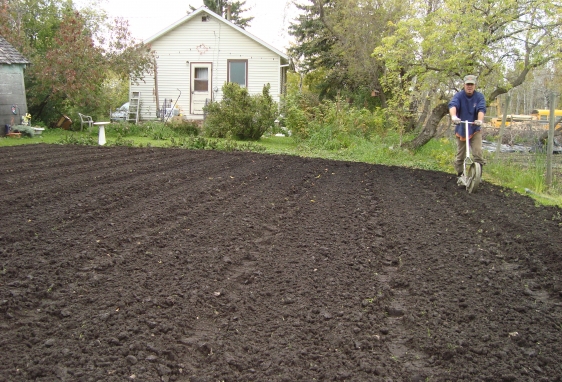Courtesy of Wally S., Wally’s Urban Market Garden, Saskatoon SK
Success at any scale of farming requires continuous production of certain crops, such as green beans and onions, leafy greens and radish. Staggered plantings are the way to accomplish that. Some call it succession planting. But don’t confuse this with relay planting. Here’s the difference:
>> Relay planting is the planting of different crops in the same plot, one right after the other, during a single season.
>> Staggered or succession planting is the planting of the same crop in different plots throughout the season.
Staggered plantings need to be timed properly. To put in a proper stagger, you can’t rely on spread sheet dates. Why? Because of weather variables. Your planned spreadsheet plantings and the reality on the ground frequently diverge. Let’s take spinach. Say you want to have steady production during your cool weather spring. LSF dates are irrelevant. You can plant as soon as you can work the soil.
For me in Zone 3, that is usually the first week of April, when the snow is gone from the ground. Though spinach germinates in cool soil conditions, it can take up to 10 days +. If your spreadsheet calls for another planting a week from your initial planting, do you hit the plots? No, because planting before emergence and development of your initial crop will more than likely mean that your two plantings will coincide and you will be oversupplied when it comes time to harvest. Wait until you get germination, crop emergence, and some development on your initial crop. Then you put in your next staggered planting.
Spread sheet planting dates can be useful. But for staggered plantings, conditions on the ground trump planning.
LEARN MORE ABOUT THIS TOPIC IN THE BACKYARD RICHES MEMBER FORUM HERE>


